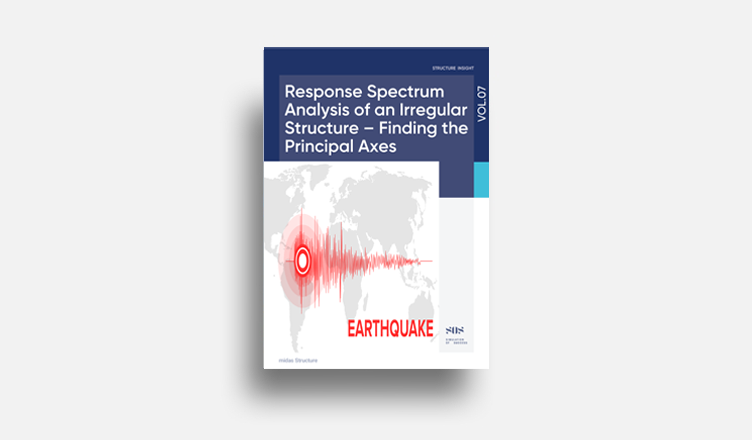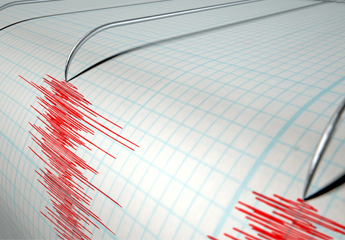Response Spectrum Analysis of an Irregular Structure - Finding Principal Axis
When designing a “safe” structure, the possibility of future earthquakes must be considered. A “safe” design, however, for an earthquake-resistant structure, has a different meaning when compared to the common definition of “safety.” When an earthquake occurs, an earthquake-resistant structure will sustain some damage, but it is important that there is no critical damage for life safety. With this in mind, designing a safe structure also involves the consideration of economic design.
The most commonly used analysis methods for designing earthquake-resistant structures are static seismic analysis and response spectrum analysis. Response spectrum analysis uses a scale factor, which is the ratio of the base shear force from static seismic analysis to the base shear force from dynamic analysis. This scale factor acts as a safety factor for structural design.
In irregular structures, one-directional response spectrum results may include a different direction’s response. In some cases, the results of both directions may appear similar. When this occurs, the base shear force from the response spectrum analysis is remarkably smaller than the base shear force calculated by the static seismic analysis. This causes the scale factor to be very large, also causing an overestimation of the design.
In order to resolve the issues of economy and structural safety, a common approach is to find and analyze the principal axes of the structure. The following outlines a brief description of the subsequent sections discussed in this technical guide.
Definition of a Principal Axis
What is a principal axis?
There are many definitions of a principal axis to a structural engineer:
- “It is the direction in which the seismic load (response spectrum load) has the largest influence on the structure.”
- “It is the loading angle at which the reaction from the loading direction is the largest.”
- “It is the structural axis, which the reaction from a load in the orthogonal direction is minimal.”
The following descriptions relate the principal axis to earthquake-resistant design:
- “The fundamental criterion of a building is to have the same resistant force regardless of the earthquake direction.”
- “Design requires the consideration of the direction that generates the largest design member forces due to an earthquake load, which causes the building to behave most unfavorably to the earthquake load.”
- “Determine the weakest earthquake direction (principal axis) of the building, in order to satisfy the above statement.”
- As a reference, explanations for UBC-97 and IBC2000 are stated below. Each indirectly refers to the principal axis.
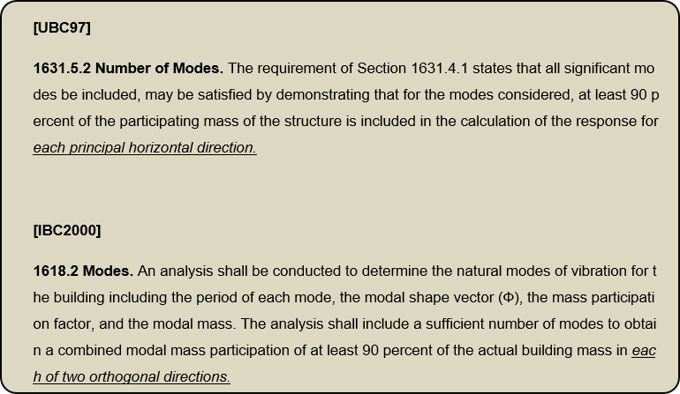
To summarize, an earthquake-resistant structure should be designed so that resistance is maximized during seismic loads. In order to accomplish this, the principal axis must be determined. The principal axis is perpendicular to the direction of a seismic load, which induces the largest member forces in the structure, or in other words, the direction in which a seismic load will have the greatest impact. However, a standard method to find the principal axis is not clearly mentioned, but recently, research has developed a reasonable method to find the principal axis of a structure. The following are recent research cases and methods.
Introduction to Research Cases and Methods
This section will present some research cases to find the principal axis and the current method that is used in practice.
Research cases and methods
As mentioned in the definition of the principal axis section, the method to find the principal axis has not been referred to specifically. The cases, discussed below, are only proposals to find the principal axis numerically.
(1) E.L. Wilson
Establishment of the Reaction Direction of the 1st Mode to Principal Axis after Modal Analysis.
“Three-Dimensional Static and Dynamic Analysis of Structures,” Computer and Structures, 2002
(2) O.A.Lopez and R. Torres
Finding the Critical Angle Using Modal Analysis Method’s Fundamentals and CQC Theory, Trial and Error Method. “The Critical Angle of Seismic Incidence and the Maximum Structure Response,” EESD, 1997
(3) Trial and Error Method: Practical Approach
After performing modal analysis by setting the earthquake loading direction, or the building’s direction, decide on the loading direction angle where the orthogonal reaction is zero, or consider the direction of the core members (shear wall/column).
(4) Code Approach
Separately perform the analysis according to the IBC2000 method and combine the results from this method with the 100/30 rule or SRSS. When the design (appropriate load combination method is evaluated by the engineer) is performed, it is regarded that an earthquake from all directions can be resisted.
In order to find the principal axis, as mentioned above, various methods can be used, but there are many difficulties when applying them in practice. The following method is, therefore, commonly used.
Current practical method for the solution
The method introduced below, is thought to be the most commonly used method to find the principal axis; however, the analysis is time-consuming.
Conversion of Loading Direction:
① As shown in figure 1, the analysis is performed by changing the loading direction or changing the axis of the structure.
② The direction that creates the largest difference between the X and Y components of the base shear force is in the principal axis. (However, this method requires iterative analyses to find the principal axis of the structure.)

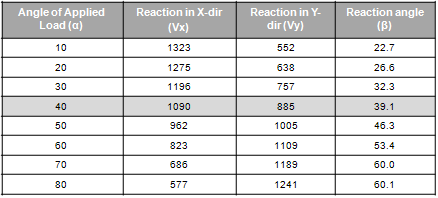
The research cases and methods that are actually used to find the principal axis are valid practices, but they are time-consuming for the engineer. If the above process is built into a program, effective earthquake-resistant designs are possible for engineers.
The next section will explain this feature in midas Gen and how it can be applied in engineering practice.
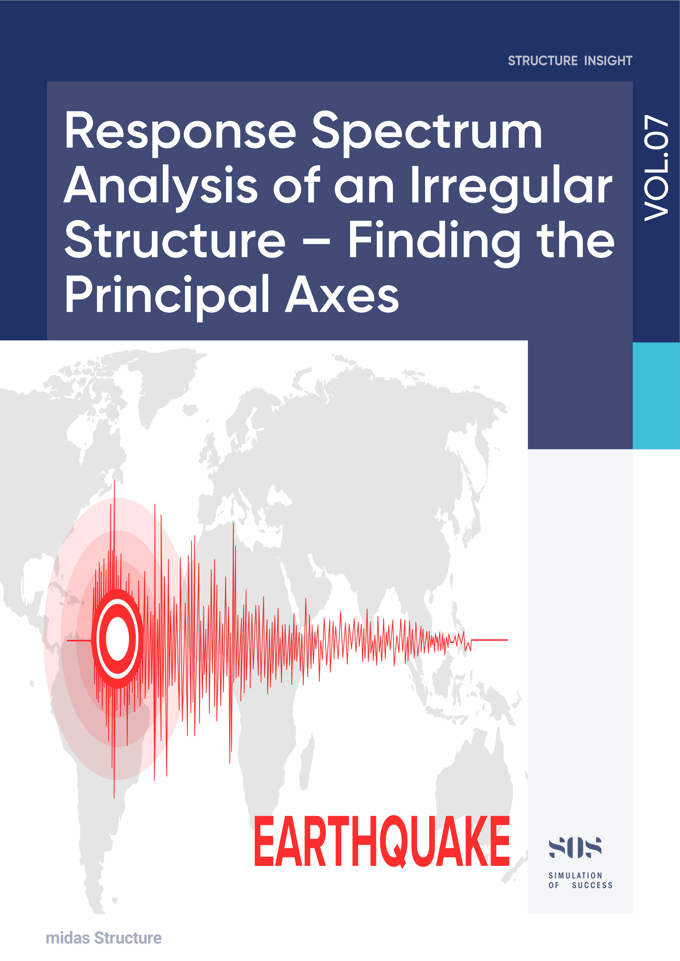
If you would like to keep reading this article, please download the VOL.07 White Paper below.
 Banner Title Products
Banner Title Products



